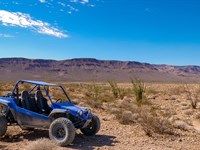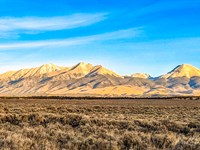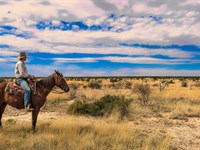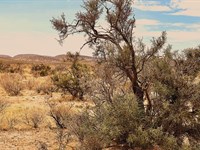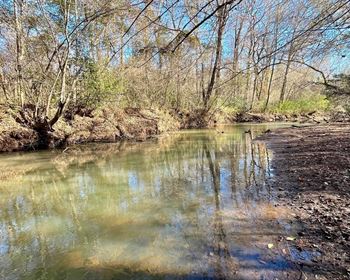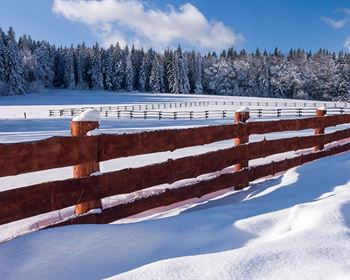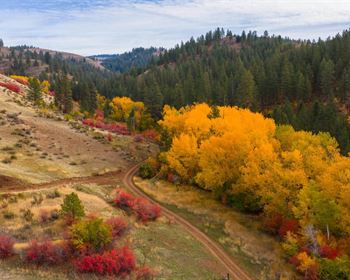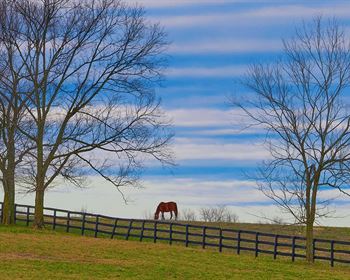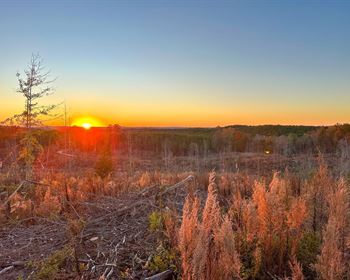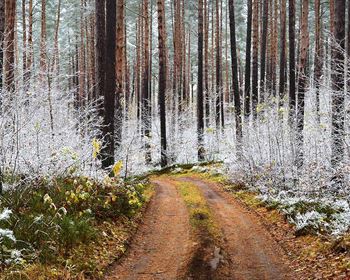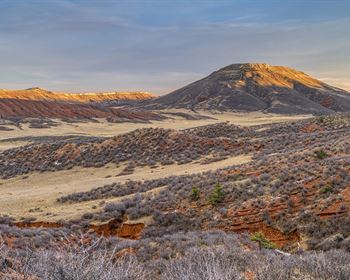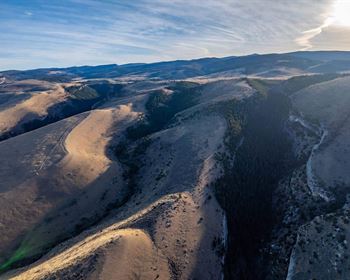Your Colorado Freedom Starts Here
San Luis, CO 81152
Costilla County, Colorado
Farm Description
Five acres of open Colorado land where the sky stretches wide and the mountains stand tall on the horizon. This property in Rio Grande Ranches gives you room to breathe, space to build, and freedom to create exactly what you want. Whether you're planning a weekend camping spot, parking an RV for seasonal getaways, or building your dream mountain home, this blank canvas is ready for your vision.
The location puts adventure right at your doorstep. Great Sand Dunes National Park is just an hour away, where you can hike North America's tallest dunes and explore alpine lakes. Ute Mountain is a short drive for more recreation and exploration. This is high desert country where the air is clean, the stars blaze bright at night, and you can actually hear the quiet.
This is your chance to own a piece of Colorado without the restrictions or the premium price tag. No HOA telling you what you can or can't do. Just you, your land, and the mountains. Make it a weekend retreat, a hunting camp, a retirement plan, or your full-time escape from the noise. The hard part is deciding what to do first.
We are open to owner financing as well - here is what that would look like:
- Total Money Down: $599 ($349 downpayment + $250 closing cost)
- Monthly: $136/Month for 72 months
See Info below.
- Subdivision: Rio Grande Ranches
- State: Co
- County: Costilla
- Zip:
- Size: 5 acres
- Parcel: 71512780
- Legal Description: R.G.R. Unit 11 Blk 0 Lot 102
- Approximate Lat/Long Coordinates:
37.0279, -105.6946
37.0279, -105.6937
37.0262, -105.6937
37.0262, -105.6946
- Annual Taxes: Approximately $73.76/Year
- Zoning: Estate Residential
- For a site built home, you need a 600sqft minimum footprint
- Mobile homes are Allowed.
- You can camp for 14 days (every 3 months)
- Temporary RV Occupancy permit available for up to 180 days if a well has been permitted or cistern installed and a septic or onsite waste management system has been installed ($250 fee - good for 60 days at a time while building, renewable).
- Zoning office is open Monday through Thursday and can be contacted to answer any questions.
- Hoa/Poa: No
- Improvements: None
- Access: Dirt Road
- Water: Would be by holding tank
- Sewer: Would be by septic
- Utilities: Would be by alternative
Information presented in this listing is deemed accurate but is not guaranteed. Buyers are advised to conduct their own due diligence and verify all details independently.
---
Location And Setting:
- San Luis Valley Position: This five-acre parcel sits in Rio Grande Ranches on the western side of the San Luis Valley, North America's largest high-altitude valley at 7,650 feet elevation. The Rio Grande River flows just miles to your west, while the Sangre de Cristo Mountains rise dramatically to the east with fourteen-thousand-foot peaks creating stunning backdrops. You're positioned for both solitude and access, with Alamosa forty-five minutes northwest for supplies, San Luis twenty miles south as the county seat, and Fort Garland twenty-five miles northeast.
- Valley Floor Living: This subdivision offers classic high desert terrain with gentle rolling topography, sagebrush, native grasses, and scattered pinyon pine. The sandy loam soil drains well and makes excellent building foundation. You get wide open views in every direction, over 300 days of sunshine annually, and that big sky country feeling without extreme altitude. The western valley location surrounds you with working ranches and agricultural heritage dating back to the 1800S.
---
Recreation And Outdoor Adventure:
- Great Sand Dunes Access: One hour north brings you to Great Sand Dunes National Park with 750-Foot tall dunes, Medano Creek in spring, sandboarding, and mountain hiking. The Rio Grande River nearby offers fly fishing for brown and rainbow trout, peaceful kayaking through cottonwood groves, and winter bald eagle watching.
- Mountain Recreation: The Sangre de Cristo Range twenty-five miles east provides hundreds of miles of hiking trails including the 100-Mile Rainbow Trail, access to multiple fourteeners like Blanca Peak and Kit Carson, alpine lakes, aspen groves, and wilderness camping. Mountain Home Reservoir thirty minutes away offers excellent trout fishing with regular stocking programs.
- Hunting Paradise: Your property sits in Game Management Unit 83, home to the legendary Trinchera elk herd of 16,000 animals. This is premier elk and mule deer hunting territory with success rates above state averages. Pronghorn antelope, Rio Grande turkeys, and small game provide year-round hunting opportunities. Wildlife viewing is spectacular with daily elk, deer, coyote, golden eagle, and hawk sightings.
---
Historical Significance:
- Colorado's Birthplace: You're in "Where Colorado Began" territory. San Luis, founded in 1851, is Colorado's oldest continuously inhabited town, predating Denver by eight years. Hispanic settlers from Taos established communities here with traditional acequia irrigation systems still in use today. Fort Garland, established in 1858 and commanded by Kit Carson, sits nearby as a preserved frontier military museum. The Rio Grande corridor has served as a major trade route since Spanish exploration in the 1500S.
---
Building Freedom:
- Estate Residential Zoning: Build what you want with minimal restrictions. Allowed uses include site-built homes (600 sqft minimum footprint), mobile homes (1976 or newer), modular homes, or cabins. Add unlimited accessory structures like garages, workshops, barns, and greenhouses. No HOA fees or architectural review boards. Camp for 14 days every 3 months without permits. Temporary RV permits available for 180 days while building ($250 fee, 60-day renewable periods) with well/cistern and septic in place. No timeline requirement to build. Contact Costilla County Zoning, open Monday-Thursday.
- Off-Grid Living: Solar power thrives with 300+ sunny days annually. Typical systems run $15,000-$25,000 installed, eliminating electric bills forever. Wells typically hit water at 150-300 feet ($10,000-$15,000 complete). Cistern storage is an affordable alternative. Septic systems cost $5,000-$8,000 in the ideal sandy loam soil. Starlink satellite internet provides high-speed connectivity anywhere. Propane for heating and cooking, with nearby national forest firewood permits available.
- Affordable Building: Simple stick-built cabins run $75,000-$125,000 for 800-1200 sqft if owner-built. Manufactured homes start at $60,000-$90,000 delivered. Complete off-grid setup under $150,000 total. Compare that to any housing option in Denver or Colorado Springs for incredible value.
---
Climate And Terrain:
- Four-Season Mountain Climate: High desert at 7,650 feet means comfortable summers days, 40s-50s nights), cold but sunny winters (30s days, single digits nights), and spectacular spring and fall transitions. Low humidity makes every temperature feel more comfortable. Thirty to forty inches of snow annually on the valley floor melts quickly between storms. Summer afternoon thunderstorms provide brief dramatic weather followed by incredible sunsets.
- Excellent Soil: McGinty fine sandy loam with 3-9% slopes perfect for building. Excellent drainage prevents water problems and supports standard septic systems. Multiple building sites with southern exposure for passive solar gain. No flood zones. Moderate wind, no tornado risk.
---
Investment Value:
- Appreciating Market: Costilla County land values doubling and tripling over the past decade as buyers discover affordable Colorado property. Properties that sold for $3,000-$5,000 now trading for $6,000-$12,000+. Front Range buyer demand, retiree interest, and homesteading trends driving continued growth. Still a fraction of costs in mountain resort areas or Front Range locations.
- Low Holding Costs: At $73.76 annual property tax (about $6/month), holding costs are negligible. Buy now, build when ready, with no pressure or bleeding money on HOA fees. Land appreciates while you plan. Some investors buy multiple parcels recognizing land scarcity as Colorado population grows.
- Income Potential: Lease grazing rights to local ranchers, rent hunting access during elk season, list campsites on Hipcamp, or build a rustic cabin for vacation rentals near Great Sand Dunes. Multiple income strategies available beyond personal use.
---
Community And Services:
- Town Access: Alamosa (45 min) provides Walmart, Home Depot, Safeway, full medical center, banks, restaurants, and all modern services. San Luis (20 min) offers county government services, small grocery, gas, and authentic New Mexican food. Fort Garland (25 min) has basic services and historic fort museum. Monte Vista (30 min) adds more amenities.
- Emergency Services: Costilla County Sheriff patrols rural areas with 30-60 minute response times. Fort Garland Fire Department provides volunteer fire protection. Alamosa ambulance service for medical emergencies. Realistic rural response times require self-reliance for fire prevention and first aid.
- Community Culture: Mix of long-time Hispanic families, traditional ranchers, and new off-grid arrivals united by respect for independence and property rights. Live-and-let-live culture with helpful neighbors who don't meddle. Conservative values emphasizing hard work, self-sufficiency, and personal responsibility. Informal social connections appeal to those valuing privacy and solitude.
---
Seasonal Living:
- Spring and Summer: Spring brings wildlife photography, turkey hunting, and building season preparation. Summer delivers long daylight hours, comfortable temperatures, afternoon thunderstorms, and spectacular Milky Way night skies invisible in light-polluted areas. Perfect weather for construction, camping, fishing, and day trips.
- Fall and Winter: September brings golden aspen colors and prime elk hunting through November. Stable weather perfect for outdoor projects. Winter transforms the valley with snow-covered peaks, quiet solitude, and sunny cold days that feel warmer than the thermometer reads. Ideal for planning and maintenance while elk herds winter on the valley floor.
---
Your Decision And Next Steps:
This five acres in Rio Grande Ranches represents genuine Colorado land ownership without premium pricing or restrictive HOAs. Room to breathe, mountain views, recreation access, and freedom to build your vision on your timeline. Whether it's a weekend retreat, long-term investment, retirement homesite, or off-grid homestead, this land serves your goals. Low entry cost, minimal holding expenses, and complete control over decisions and timeline. That freedom is increasingly rare in modern America.
If you've been dreaming about owning Colorado land where you can build without asking permission, this is your opportunity. Act while these properties remain affordable. As more people discover the San Luis Valley and land values continue rising, the window for this value won't stay open forever. Reach out today for complete property information and financing options to take the first step toward owning your piece of Colorado.
---
The details provided in this property listing are believed to be reliable but are not warranted. Prospective buyers should perform their own research and verification of all information before making purchase decisions.
Farm Maps & Attachments
Directions to Farm
From Fort Garland, take Pfeiffer Ave to 4th Ave.
Follow CO-159 S for 26.8 miles to Rd H.
Continue on Rd H, then take Vista Dr, Delaware Trail, and Black Hawk Rd for 13.9 miles to reach Navajo Trail and the property.

